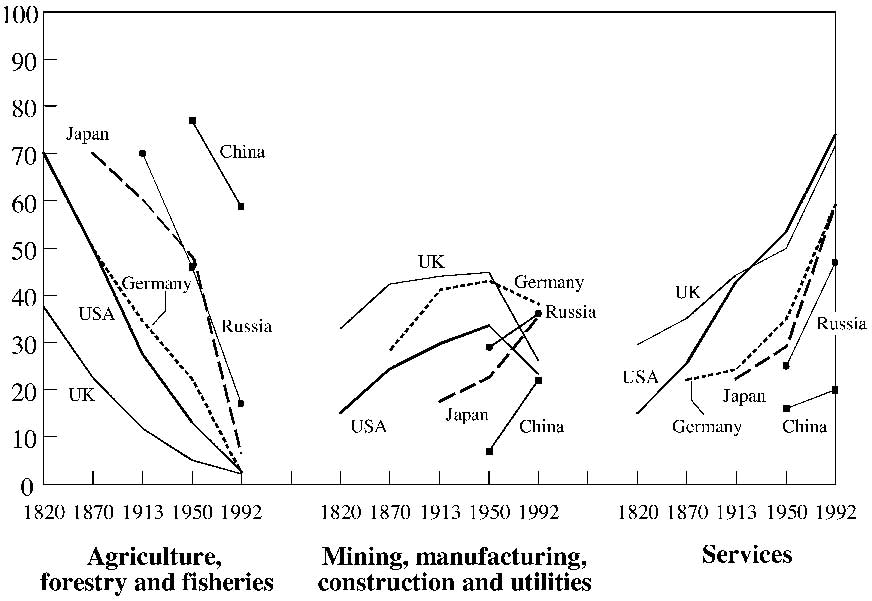dies remain substantial with EU accounting for bulk of direct export subsidies (FAO, 2006b). Removal of price support and other subsidies to 2030 could result in moderately increasing international prices, while prices would fall substantially in countries with high levels of protection (FAO, 2006b).
The impact of trade on developing countries is very controversial. Most of the conclusions that imply developing countries stand to lose in future trade arrangements are premised on the fact that developing countries will still be dependent on industrialized countries for trade. There is extensive evidence of emerging South-South trade relations (UNCTAD, 2005). These relations could imply that even if industrialized countries form a substantial component of demand for exports from developing countries, the limited outlook for growth of industrialized countries puts them behind the emerging strong demand of Asian countries, particularly China and India. Developing countries that export non-oil primary commodities benefit from increased demand and rising prices for their exports despite low commodity prices.
Terms of trade have significant impacts on affordability of food imports and food security for countries with a large share of agricultural trade. Many of the lesser developed countries have faced deteriorating terms of trade since the 1980s. Agricultural terms of trade fell by half from a peak in 1986 to a low in 2001 (Figure 4-7). Because many of these countries depend on commodity exports to finance food imports, a decline in terms of trade for agriculture threatens food security (FAO, 2004b). The region that has suffered most from declining terms of trade is sub-Saharan Africa. Since the 1970s, the deterioration of agriculture terms of trade in that region has led to a substantial reduction in the purchasing power of commodity exports. In addition to declining terms of trade, fluctuations and trends in prices negatively affected African agriculture. The declining and |
|
fluctuating export prices and increasing import prices compound socioeconomic difficulties in the region, as well as agricultural patterns (Alemayehu, 2000). Short-term outlooks such as those from the World Bank project this situation to persist (e.g., UNCTAD, 2005).
A number of model results recently reviewed (Beierle and Diaz-Bonilla, 2003) whether trade liberalization (in the form of reduced protection and export subsidies and lowered import restrictions) would benefit small-scale farmers and others in poverty in developing countries. Several key findings from their review and other assessments are:
• Most models demonstrate negative impacts of current industrialized country (OECD) trade protection policies but positive impacts from developed country liberalization on developing country welfare, agricultural production and incomes, and food security.
• Impacts vary by country, commodity, and sector, and for regions within countries.
• OECD market access restrictions harm developing countries, although effects of production and income-support subsidies are more ambiguous.
• Developing countries tend to gain more from liberalization of their own policies than from reforms by the OECD. Consumers in developing countries benefit widely from these reforms.
• Model results differ on the basis of assumptions such as the scope of commodity coverage, mobility of resources among alternative crops and between farm and non-farm employment, availability of underutilized labor, and static versus dynamic analysis.
• Multilateral liberalization reduces the benefits derived from preferential trade agreements, but these losses are relatively small compared to the overall gains from the broader reforms. |
